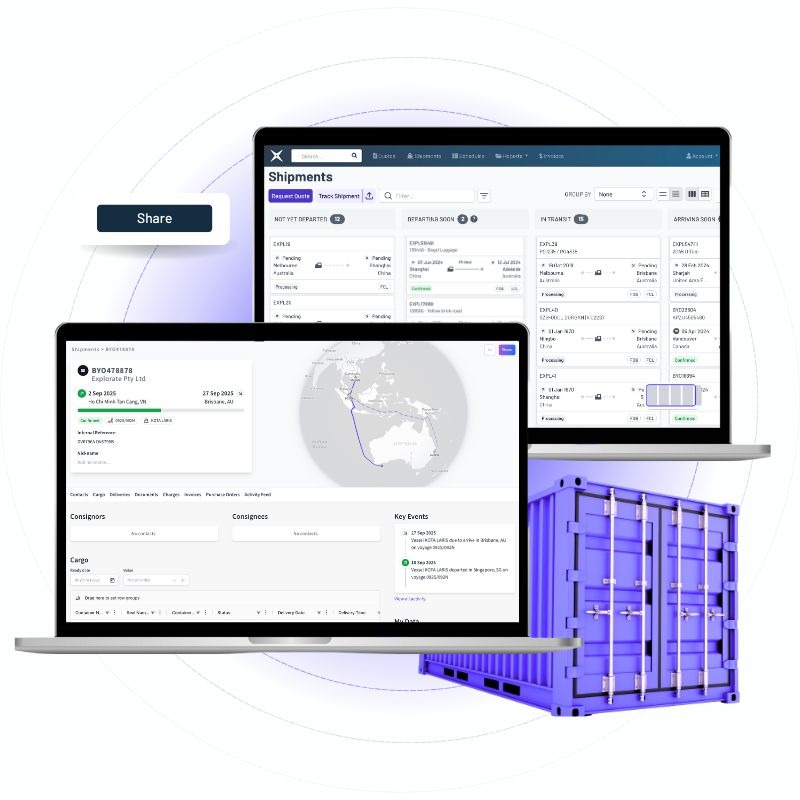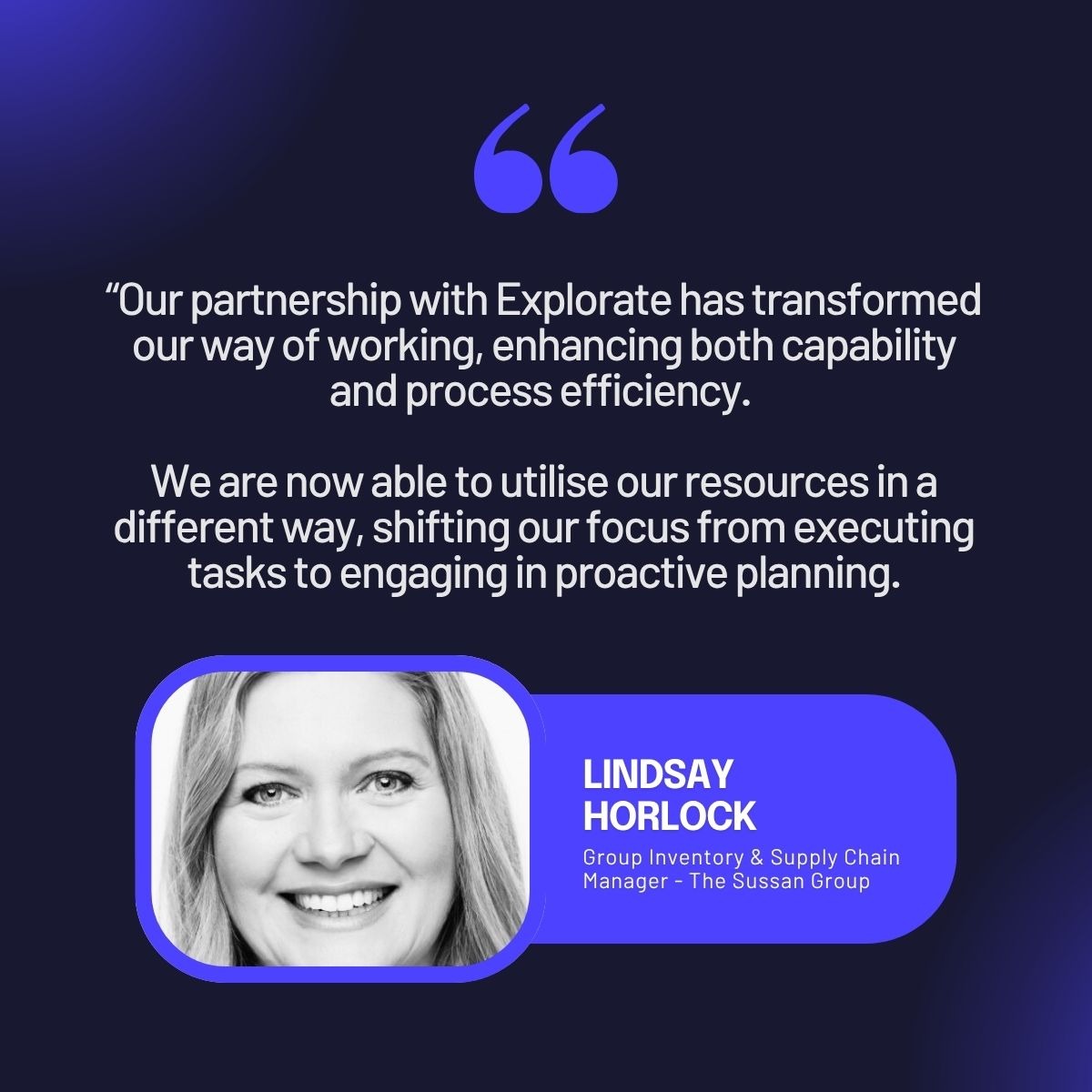Got a tracking number? Let’s see where your freight is

As supply chain leaders, we know that improving performance starts with improving visibility. We adopt digital tools believing better visibility comes from having more data. But too often, we end up drowning in disconnected data, creating more work, more confusion, and less control.
Dashboards multiply. Reports overlap. Teams spend more time aligning spreadsheets than managing shipments. Instead of improving performance, the data starts managing us.
In a 2024 survey by LeanDNA and Wakefield Research, supply chain and planning professionals reported spending nearly 14 hours per week, or around 35 percent of their time, manually tracking data. That is time that could be spent proactively optimising your supply chain.
For those managing complex retail or manufacturing supply chains across APAC, visibility is not just about knowing where containers are. It is about connecting the right data across systems, partners, and teams so you can see what is happening, understand what it means, and act before it becomes a problem.

When visibility breaks down, even the best-run operations become reactive. One missed update can throw production off schedule, increase freight costs, and damage customer confidence.
Here is how that plays out for most supply chain leaders:
Poor visibility is not just a performance issue. It is a compounding one. It drives up costs, reduces capacity, and limits a business’s ability to plan, forecast, and grow. The problem is often not a lack of data but rather a lack of connection.

That lack of connection sits at the heart of the Visibility Paradox.
For most supply chain leaders, visibility feels both closer and further away than ever. Supply chains today generate more data than ever, yet clarity has never been harder to achieve. Every system, partner and carrier promises real-time data, yet decision-making has never felt more complicated.
Teams are flooded with updates from multiple systems but still cannot see the full picture. The more fragmented the data, the harder it becomes to act with confidence.
True visibility is not about collecting every data point. It is about connecting the right ones. It means transforming scattered updates into a single, shared view of what is happening and what is next across suppliers, carriers and customers.
Until that happens, supply chains will continue to operate in a paradox: surrounded by data but still in the dark.

Good visibility is not about collecting more data. It is about connecting it, giving every team the information they need, when and where they need it. When data flows freely between systems, suppliers and teams, decisions become faster, clearer and easier to trust.
Visibility is built on connection.The goal is a single source of truth that brings together data from across your supply chain, including freight forwarders, carriers, ERP, finance and warehouse systems into one clear, reliable view.
The foundation of this single source of truth is:
When your data is connected and standardised, visibility becomes more than a dashboard. It becomes the foundation for better decisions.

Confidence in every delivery. When all forwarder and carrier data is connected, teams can see exactly where containers are and when they’ll arrive. Accurate ETAs mean fewer surprises, smoother delivery management, less risk of demurrage or detention costs. Teams can anticipate disruptions, adjust production and delivery plans, and keep customers informed. When issues do arise, they’re spotted early so corrective actions can be taken and customers are kept informed.
Need to Know: Fragmented tracking data from multiple forwarders is one of the most common sources of delay and confusion in global supply chains. Bringing tracking into a single, standardised feed with automated updates will eliminate manual handling and improve reliability across all trade lanes.
In Practice: Build visibility that starts with reliable data. Look for a forwarder-agnostic solution that allows for easy upload of shipment CSVs or integration with your existing systems. The goal is a single, accurate source of truth that helps teams act quickly and reduce risk. Platforms like Explorate standardise shipment tracking from every forwarder, providing live ETAs and automated alerts for delays or route changes.
Clarity across every order. When data from your suppliers, purchase orders and shipments is connected, operations and planning teams can see what’s moving, what’s delayed and what needs attention. Teams can prioritise critical orders, resolve issues early and keep goods flowing through the supply chain.

Need to Know: When order and supplier data are disconnected, the risk of missed bookings, incomplete documents or late deliveries increases. A shared view of order progress across procurement, logistics and planning helps reduce these risks and keeps shipments on schedule.
In Practice: Design visibility around alignment. Look for a setup that flags exceptions such as missing documents or booking risks early, helping teams act before small issues become costly. Platforms like Explorate connect supplier, shipment and order data so updates are aligned to your workflow and flow automatically.
Control and accuracy across every file. When invoices, purchase orders and freight documents are connected and updated automatically, teams can find what they need instantly and trust that it’s accurate. Approvals are faster, errors drop and reconciliation happens without the usual back-and-forth between departments.
Need to Know: Disconnected documents are a common cause of delays and compliance risks. When paperwork is stored across different systems or managed manually, shipments can miss clearance windows or get held at port. Centralising documentation reduces errors, saves time, and ensures all stakeholders have access to the most up-to-date information.
In Practice: Design your workflows around accessibility and accuracy. Look for a system that syncs with your ERP or finance software to eliminate version confusion and reduce approval delays. Explorate automatically links freight, finance and purchase order documents to each shipment, allowing granular control and full oversight.
Accuracy from quote to invoice. When finance and operations share the same data, teams can see exactly where money is going and why. Live cost tracking and connected forecasts make reporting faster, highlight variances early and help prevent budget overruns.
Need to Know: When financial and operational data sit in separate systems, small variances often go unnoticed until it’s too late to correct them. Connecting freight and finance data gives leaders a live view of true landed costs and overall performance, reducing surprises at month-end and improving forecasting accuracy.
In Practice: Build cost visibility into your daily operations. Look for tools that connect quote, booking and invoice data so every charge can be traced back to its source. Platforms like Explorate integrate freight and finance data in real time, notifying shippers and giving them the ability to approve cost variations from quote cost variations. It also enables easy quote to invoice reconciliation within the shipment record.
.png)
Visibility that measures more than movement. When shipment and emissions data are connected, teams can track their Scope 3 emissions, compare routes and make greener transport choices without slowing operations.
Need to Know: The biggest challenge in sustainability reporting is collating accurate data from multiple sources. Without consistent, shipment-level data, Scope 3 reporting is time-consuming and unreliable. Linking freight data with ISO verified emissions metrics allows teams to measure their carbon impact, meet reporting requirements and identify opportunities to cut emissions.
In Practice: Tracking emissions should be as easy as tracking a shipment. Look for technology that automatically captures and calculates emissions at a shipment level across all your forwarders. Explorate offers GLEC and ISO compliant emissions data that is easily accessible via the shipment record, downloadable as a CSV.
We often hear the same thing from supply chain leaders: visibility is a top priority, but getting there feels harder than it should. Here’s our tried and tested approach to building visibility that delivers accuracy, control and confidence across your supply chain.

Building visibility doesn’t happen all at once. It starts with clarity, a structured plan and the right focus.

Step 1: Map and Analyse Your Supply Chain
List every point where data is created, from purchase orders and shipment tracking to invoices and emissions reports. Identify where information is duplicated, delayed, or missing. Pay attention to handover points and where teams rely on manual updates or spreadsheets, as these are often the biggest visibility gaps.
Step 2: Identify Bottlenecks and Set Priorities
Focus on the points where poor visibility has the biggest operational or financial impact. That might be unreliable ETAs, manual documentation, unverified freight charges, or slow supplier communication. Quantify the cost of these inefficiencies where you can, so the value of improved visibility is clear.
Step 3: Standardise and Automate
Bring consistency across teams and partners. Define shared data formats and standard workflows for key tasks such as booking, approvals and reporting. Automate updates, alerts, and approvals so issues are visible early. Standardisation builds trust in the data and reduces time spent reconciling differences.
Step 4: Optimise and Scale
Once visibility is in place, use connected data to forecast, benchmark, and continuously improve. Extend visibility to landed cost tracking, supplier scorecards, and sustainability reporting. The goal is not just more data, but smarter use of it to guide better decisions at every level of the supply chain.
Once the foundations are in place, the next step is maintaining accuracy and momentum so visibility continues to deliver value as your supply chain grows. Not sure where to start, speak to our supply chain experts.

When visibility works, it delivers measurable results across cost, performance, and resilience:


More data does not automatically lead to better decisions, it can create more noise in your supply chain operations making it even harder to focus on what matters. Fragmented systems create hidden costs, including excess inventory, emergency freight, lost customers, rising operational costs, and labor inefficiencies.
Real visibility, built on connected, accurate and actionable data, should empower teams to anticipate issues, optimise operations, and make confident decisions that drive performance and resilience.
Ready to build a simple, smart supply chain, powered by your data.
🔗 Start your free trial today | Speak to our team


Continue building your visibility strategy with these practical resources:

No spam. Just the latest market news, tips, and interesting articles in your inbox.
